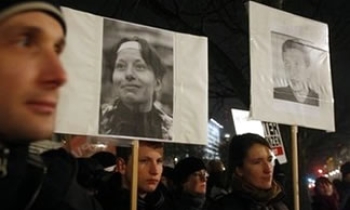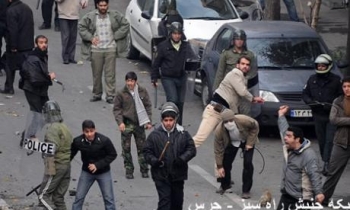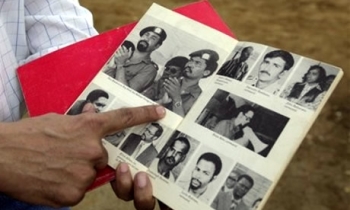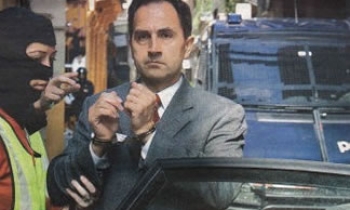April 16 (Bloomberg) -- The Wall Street Journal won the Pulitzer Prize gold medal for Public Service today for its reports on the scandal surrounding corporate executives' backdated stock options.
It was one of two Pulitzers for the Journal. The newspaper was also awarded the prize for international reporting for its look at the impact of Chinese capitalism.
The 91st annual prizes for excellence in journalism were awarded by the Columbia University School of Journalism in New York City. Judges pored over 1,225 entries, slightly fewer than last year.
``Despite the squeeze on newsroom budgets and the fact that the news media are often criticized in this country, the newspaper winners and the finalists are heartening examples of high-quality journalism throughout the U.S.,'' prize administrator Sig Gissler said.
Winners receive $10,000 and a certificate, except in the case of the Public Service award. That prize, a gold medal, is always given to a newspaper rather than an individual.
The Oregonian of Portland won the breaking news Pulitzer for its story on the trials of a family missing in mountainous wilderness.
The investigative reporting prize went to Brett Blackledge of the Birmingham News of Alabama for his exposure of corruption in the state's two-year college system.
Kenneth Weiss, Usha Lee McFarling and Rick Loomis of the Los Angeles Times received the prize for explanatory reporting on the state of the world's oceans.
Debbie Cenziper of the Miami Herald recieved the local reporting award for her coverage of waste and lack of oversight in the city housing agency.
Prize for Boston Globe
The Boston Globe's Charlie Savage won the prize for national reporting for disclosing that President George W. Bush often used ``signing statements'' to assert his right to bypass parts of new laws.
The feature writing prize went to Andrea Elliott of the New York Times for her portrait of an immigrant imam.
The editorial board of the New York Daily News was awarded the Pulitzer Prize for editorial writing, while Walt Handelsman of Newsday, based on New York's Long Island, won his second editorial cartooning Pulitzer. He won his first in 1997 while working for the Times-Picayune of New Orleans.
Photo Prizes
The breaking news photography award went to Oded Balilty of the Associated Press for his shot of a Jewish woman defying Israeli security forces removing West Bank settlers.
The feature photography prize went to Renee Byer of the Sacramento Bee of California for her portrait of a boy and his mother as he loses his fight with cancer.
The competition was founded by Joseph Pulitzer, a U.S. newspaper publisher from Hungary who led a campaign for journalistic excellence in the late 19th century. Pulitzer established and endowed the awards and the Graduate School of Journalism at Columbia as a provision of his will.
The awards, which are also presented in various categories of literature and the arts, started in 1917. Today, more than 2,000 entries are submitted annually to 102 judges, who include journalists, news executives, playwrights, composers and critics, in 21 categories.
Winning in arts categories today were Cormac McCarthy, for ``The Road,'' fiction; David Lindsay-Abaire, for ``Rabbit Hole,'' drama; Gene Roberts and Hank Klibanoff, for ``The Race Beat,'' history; Debby Applegate, for ``The Most Famous Man in America,'' biography; Natasha Trethewey, for ``Native Guard,'' poetry; Lawrence Wright, for ``The Looming Tower,'' general non-fiction; and Ornette Coleman, for ``Sound Grammar,'' music.
Special Citations
Writer Ray Bradbury and jazz composer John Coltrane were awarded special citations.
There are three nominations for finalists in each category. The nominations are presented to the Pulitzer Prize Board, which makes final decisions.
Last year marked the first year Columbia accepted entries with online material from newspapers in all 14 journalism categories. It had allowed newspapers to submit Internet materials in the public service category since 1999.
The university expanded its acceptance of online materials this year, allowing newspapers to submit databases, interactive graphics and streaming video in all but two photography categories.
In two categories, breaking news reporting and breaking news photography, applicants can submit entries consisting entirely of material published on a newspaper's Web site. All other categories require submissions that include material from a print edition.
Also this year, the prize board replaced the beat reporting category created in 1991 with one for local reporting, to recognize ``a distinguished example of local reporting that illuminates significant issues or concerns.''
Only material published in newspapers printed daily, Sunday or at least once a week are eligible for the journalism prizes.
To contact the reporter on this story: Chris Dolmetsch in New York at dolmetsch@bloomberg.net .









